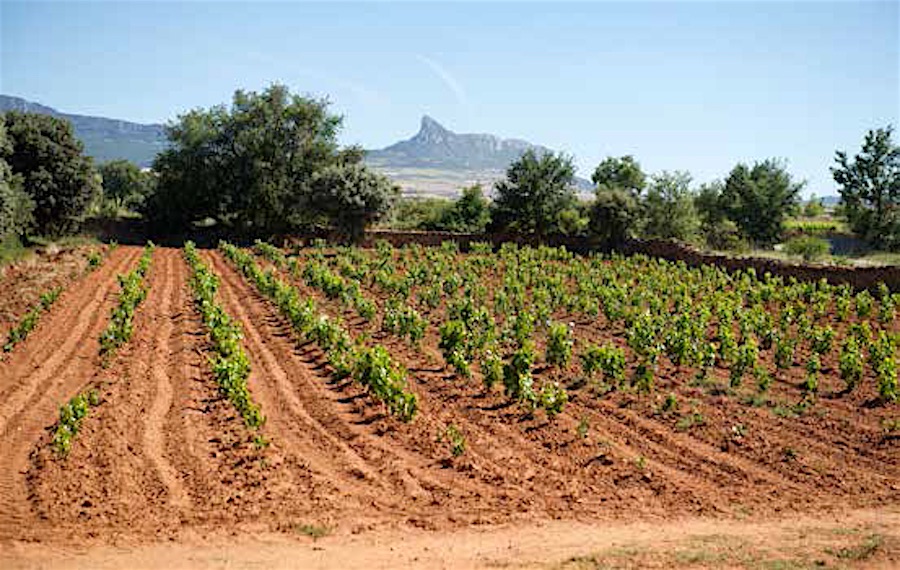See also:
The Telegraph explains the conflict around the La Rioja DOC
For us mere mortals, the news item that practically got 2016 started was that a winery in the Alava Rioja region, La Rioja Alavesa, Bodegas Artadi, was abandoning the Rioja DOC was quite a shock, at least to us.
We were aware of the unease many producers in the Alava Rioja region (and we imagine in other parts of the Rioja region, as well) were feeling, given the business model that is being implanted (or imposed) for the products coming out of that DOC into the market to be based on the quantity, on low prices, and on the “wholesale” of generic products. This means that the sales policy would hardly allow for tradition, personality, or the value that the most artisanal workmanship that the producers of high-quality wines seek to be shared.
Since what we know mostly about Rioja wine is basically limited to enjoying it, we decided to get informed by someone in the know, someone who works as a producer in the Rioja Alavesa who could clear this all up, and did so in the no-nonsense style of the people who work out in the fields and are used to fighting against nature, the weather, the ups and downs of the market, the surprises wine can give you as it ages, and even the changing tastes of the consumer. So we’re talking about people who are willing to fight against the elements, and not against the interests of the large corporations who are looking to fill the market with large amounts of cheap wines, all of them alike as they try to milk the image others have created through great effort.
The reply we got was this:
Lo que en estos momentos está surgiendo, es un movimiento siempre presente y larvado en el tiempo, en el que se ve cómo el modelo de uniformización del Consejo Regulador de Rioja, provoca claramente un traslado de la economía productiva del vino, de la zona originario de Rioja Alavesa y algo de Rioja Alta, a otras zonas mucho más rentables y menos costosas como Rioja baja y algo de Rioja Alta. Haciendo que los productores del Rioja Alavesa, pierdan valor y poder adquisitivo frente a otras zonas, provocando una mayor uniformidad a futuro.
Se trata de una lucha de modelos, y no de algo político como algunos quieren trasladar (para embarrar el campo). Es la defensa de un modelo de viticultura ligada a unos viñedos concretos y a un territorio, frente a un modelo de saldo de producto independientemente del origen, y evidentemente, aprovechando el buen hacer, nombre y calidad de unos para vender todos y todo.
What’s happening at this moment is a movement that has always been there, latent in time, in which one can see the standardization model of the Rioja Regulating Council clearly encourages a movement in the productive economy of wine, from the original areas in the Rioja Alavesa and parts of the Rioja Alta to other areas that are much more profitable and less costly, such as the Rioja Baja and other parts of the Rioja Alta. That would make the producers of the Rioja Alavesa lose value and purchasing power when compared to other areas, eventually making all wine more uniform.
This is really a “struggle of models”, and not something political, as some seem to want to make it out to be (and thus muddy the water). It’s the defense of a viticulture model linked to specific wineries and a specific territory, facing up to a product sales model that is unlinked to origin, and, obviously, taking advantage of the good production, name, and quality of others to sell all and everything.
Now that Bodegas Artadi has left, those who say that this move was political either don’t understand the Rioja Alavesa or are lying. The producers from this part of the Basque Country, like all entrepreneurs in our country, are each unique, and what brings them together are their demands (leading to most of them joining the same organization, the ABRA, Association of Wineries of La Rioja Alavesa) and their desire to defend their business interests and create the best products.
What those who are trying to politicize the matter as a “Basque separatist thing” is that on the “other side” of this debate are those who want to intensify the wine production of this area, liberalizing the planting of vines (as described beautifully by Miguel Lareina a few months ago in an op-ed for Deia), thereby guaranteeing greater production of wine that can be sold at very low prices, while still using the image of the winemakers who have spent generations making Rioja wine perfecting their product.
To better understand the situation, the blog “Hablando de vino” by Antonio Remesal, in the daily La Rioja (meaning it’s published in Logroño, outside the Basque Country) is worth a read, where he vigorously defends similar ideas, even go so far as to condemn the complacent vision of the sector that doesn’t want to permit any change to the Rioja DOC. This entry is particularly enlightening.
The winemakers in the Rioja Alavesa (and in other areas of the Rioja DOC, as Mr. Remesal well insinuates) who are uncomfortable with the current situation are not asking for all winemakers to think and act like they do. What they want is for the consumer to know what product they’re buying, where it comes from, how it was made…to understand the value of what they’re buying.
Tim Atkin, a British wine guru who is highly influential in the world of wine agreed in his “Special report Rioja 2015”, published at the beginning of December 2015, just before the “bomb” of the Artadi decision was dropped, as can be seen in another article on the “Hablando de Vino” blog which quite clearly explains the “conflict of interest, goals, and methods” situation that we’re talking about.
The situation was big enough that Mr. Atkin modified (or added; we’re not sure) an introduction that mostly talks about Artadi’s decision to leave the Rioja DOC and how this decision has a lot of debate behind it. It’s a text that makes some supremely interesting reflections and from which we’ve quoted a few paragraphs, with permission of the author:
Artadi’s decision is the latest chapter in a long running story that has pitted producers who want Rioja to be more like Burgundy, adopting a system of vineyard-designated “terroirs”, against those who believe that the strength of the generic brand is paramount. It’s not an exaggeration to say that the departure of one of Rioja’s stellar producers is a key moment in the history of the region.
….
The key point about López de Lacalle’s resignation is: what happens next? There are rumours that one or more members of ABRA (the Asosiación de Bodegas de Rioja Alavesa), which includes most of the best wineries in the Basque country, might follow suit. But no one else appears ready to jump ship. It’s arguably easier for Lacalle to do without Rioja than it is for other wineries, which feel safer under the protection of a regional umbrella.
…..
But he is only expressing publicly what many others are saying in private: Rioja needs to market itself, not as a source of oaky, easy-going supermarket reds but as one of the world’s great fine wine regions. To put it another way, Rioja needs to be break away from its cheap image.
…
But consistency isn’t the same thing as excellence. Rioja has only expressed a small part of its potential, hamstrung by regulations that are sometimes nonsensical – all wines that want to call themselves Crianzas, Reservas and Gran Reservas have to be aged exclusively in 225-litre barrels, when 228 litres or 500 litres are just as well suited – and by an image that is way too downmarket. Wine lovers should be able to discuss the differences between Rioja’s villages in exactly the same way they do those of Barolo and Burgundy. Instead, Rioja is sold as a generic block….
This “neutral” (it’s from Great Britain and it’s the first edition of this report) look is not far removed from the ideas that the winemakers have been defending for years, asking for changes to the Rioja DOC model without any significan success.
As everybody, from within and outside the debate, have said here, this is yet another chapeter in a process that will almost certainly end up changing the Rioja DOC.
As you can see, we’ve resisted the temptation to again mention how a Spanish autonomous community could keep the name of a winemaking region that neither fills out the whole of that community nor contains the whole of that winemaking region.
Those who’d like to read Tim Atkin’s “Special report Rioja 2015” and his opinions of the Rioja DOC can download it from his website.
Tim Atkin – 4/12/2015 – Great Britain
Special report Rioja 2015
Welcome to my first ever in-depth Rioja report. Whether you like your Rioja in the modern or traditional style, whether you like minerally whites or single vineyard reds, there’s something for you. There’s also something for fine wine lovers these days. Discover what makes Rioja rock, learn about the changes afoot in Spain’s most famous wine region, meet the young guns and the old hands.
(Folow)
Photo: Tim Atkin (Special report Rioja 2015)
Last Updated on Dec 20, 2020 by About Basque Country































